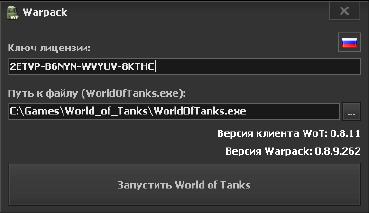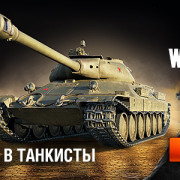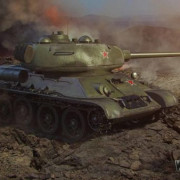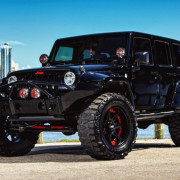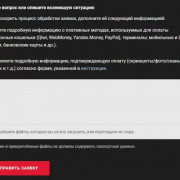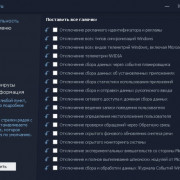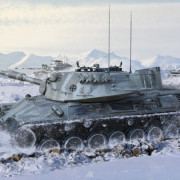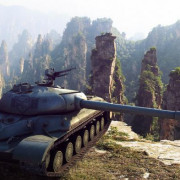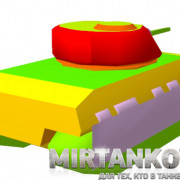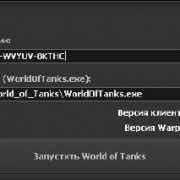«tortoises» — перевод на русский
Содержание:
References
- Associated Press (AP). 2006. Tortoise believed to have been owned by Darwin dies at 176. Fox News June 26, 2006. Retrieved December 15, 2007.
- Chambers, P. 2004. A Sheltered Life: The Unexpected History of the Giant Tortoise. London: John Murray (Publishers). ISBN 0719565286.
- Ernst, C. H., and R. W. Barbour. 1989. Turtles of the World’. Washington, D. C.: Smithsonian Institution Press. ISBN 0874744148.
- Gerlach, J. 2004. Giant Tortoises of the Indian Ocean. Frankfurt: Chimiara publishers. ISBN 3930612631.
- Kuyl, A. C. van der, et al. 2002. Phylogenetic relationships among the species of the genus Testudo (Testudines: Testudinidae) inferred from mitochondrial 12S rRNA gene sequences. Molecular Phylogenetics and Evolution 22: 174-183.
Tortoises and culture
The bas-relief from Angkor Wat, Cambodia, shows Samudra manthan-Vishnu in the centre, his turtle avatar Kurma below, asuras and devas to left and right.
In Hinduism, Kurma (Sanskrit: कुर्म) was the second avatar of Vishnu. Vishnu took the form of a half-man half-tortoise, the lower half being a tortoise. He is normally shown as having four arms. He sat on the bottom of the ocean after the Great Flood. A mountain was placed on his back by the other gods so that they could churn the sea and find the ancient treasures of the Vedic peoples.
The long life of tortoises have led to them being portrayed as symbols of longevity.
Tortoises are popular attractions for ecotourists in some areas, most notably the Galapagos Islands. In addition, some are kept as pets. They are difficult to captive breed, so many are wild caught. Tortoises need outdoor space to roam. Feeding tortoises cat or dog food is a common mistake, as both cat and dog food contain too much protein and lack other important nutrients for tortoises. Tortoises are not carnivores, and should not be fed large amounts of protein, as it may cause shell deformation and other medical problems.
Development history
In the early part of 1943 the Allied forces anticipated considerable resistance in the projected future invasion of Europe, with the enemy fighting from heavily fortified positions such as the Siegfried Line. As a result, a new class of vehicles emerged, in the shape of Assault tanks, which placed maximum armour protection at a higher priority than mobility. Initially, work was concentrated on the Excelsior tank (A33), based on the Cromwell tank. There was also a program to upgrade the armour of the Churchill tank. For similar work in the Far East, the Valiant tank (A38), based on the Valentine tank was considered although weight was specified to be as low as possible.
The Secretary of State for War and the Minister of Supply issued a Joint Memorandum in April 1943 which gave a vague specification for an Assault tank, classing it as a special purpose vehicle to operate in heavily defended areas as part of the specialist 79th Armoured Division. The Nuffield Organisation responded with 18 separate designs (AT-1 through AT-18) drafted between May 1943 and February 1944, each design larger and heavier than the last. By February 1944 design AT-16 was complete and was approved by the Tank Board who proposed that month that 25 be produced directly from the mock up stage without bothering with a prototype, to be available for operational service in September 1945. An order for 25 was placed by the War Office and work was begun. Following the end of the war the order was reduced and only 6 vehicles were built. One example was sent to Germany for trials where it was found to be mechanically reliable and a powerful and accurate gun platform, however at a weight of 80 tons and a height of 10 feet (3.0 m) it was extremely slow and proved difficult to transport.
Species list
The following species list largely follows Ernst & Barbour (1989). However, the newly erected genera Astrochelys, Chelonoidis and Stigmochelys have been retained within Geochelone.
Skeleton of a tortoise
-
Chersina
Chersina angulata, Bowsprit Tortoise
-
Cylindraspis (All species Extinct)
- Cylindraspis indica, synonym Cylindraspis borbonica
- Cylindraspis inepta
- Cylindraspis peltastes
- Cylindraspis triserrata
- Cylindraspis vosmaeri
-
Dipsochelys
- Dipsochelys abrupta (Extinct)
- Dipsochelys arnoldi, Arnold’s Giant Tortoise,
- Dipsochelys daudinii (Extinct)
- Dipsochelys dussumieri, Aldabra Giant Tortoise, common synonyms Geochelone gigantea, Aldabrachelys gigantea
- Dipsochelys grandidieri (Extinct)
- Dipsochelys hololissa, Seychelles giant tortoise
-
Geochelone
- Geochelone carbonaria, Red-Footed Tortoise; sometimes placed in distinct genus Chelonoidis
- Geochelone chilensis, Chaco or Chilean Tortoise; sometimes placed in distinct genus Chelonoidis
- Geochelone denticulata, Yellow-Footed Tortoise; sometimes placed in distinct genus Chelonoidis
- Geochelone elegans, Indian Star Tortoise
- Geochelone nigra, Galápagos Giant Tortoise; sometimes placed in distinct genus Chelonoidis
- Geochelone pardalis, Leopard Tortoise; sometimes placed in distinct genus Stigmochelys or in Psammobates
- Geochelone platynota, Burmese Star Tortoise
- Geochelone radiata, Radiated Tortoise; sometimes placed in distinct genus Astrochelys
- Geochelone sulcata, African Spurred Tortoise (Sulcata Tortoise)
- Geochelone yniphora, Angulated Tortoise, Madagascan (Plowshare) Tortoise; sometimes placed in distinct genus Astrochelys
-
Gopherus
- Gopherus agassizii, Desert Tortoise
- Gopherus berlandieri, Texas Tortoise
- Gopherus flavomarginatus, Bolson Tortoise
- Gopherus polyphemus, Gopher Tortoise
-
Homopus
- Homopus aerolatus, Parrot-Beaked Cape Tortoise
- Homopus boulengeri, Boulenger’s Cape Tortoise
- Homopus femoralis, Karroo Cape Tortoise
- Homopus signatus, Speckled Cape Tortoise, Speckled Padloper
- Homopus bergeri, Berger’s Cape Tortoise, Nama padloper, synonym Homopus solus
-
Indotestudo
- Indotestudo elongata, Elongated Tortoise
- Indotestudo forstenii, Travancore Tortoise, Forsten’s Tortoise
- Indotestudo travancorica, Travancore Tortoise
-
Kinixys
- Kinixys belliana, Bell’s Hinge-Backed Tortoise
- Kinixys erosa, Serrated Hinge-Backed Tortoise
- Kinixys homeana, Home’s Hinge-Backed Tortoise
- Kinixys lobatsiana, Lobatse Hingeback Tortoise
- Kinixys natalensis, Natal Hinge-Backed Tortoise
- Kinixys spekii, Speke’s Hingeback Tortoise
-
Malacochersus
Malacochersus tornieri, Pancake Tortoise
-
Manouria
- Manouria emys, Brown Tortoise (Mountain Tortoise)
- Manouria impressa, Impressed Tortoise
-
Psammobates
- Psammobates geometricus, Geometric Tortoise
- Psammobates oculifer, Serrated Star Tortoise
- Psammobates tentorius, African Tent Tortoise
-
Pyxis
- Pyxis arachnoides, Madagascan Spider Tortoise
- Pyxis planicauda, Madagascan Flat-Tailed Tortoise
-
Testudo
- Testudo atlas, Atlas tortoise, Colossochelys (Extinct)
- Testudo graeca, Greek Tortoise (Spur-Thighed Tortoise)
- Testudo hermanni, Herman’s Tortoise
- Testudo horsfieldii, Russian Tortoise (Horsfield’s Tortoise, or Central Asian Tortoise)
- Testudo kleinmanni, Egyptian Tortoise, incl. Negev Tortoise
- Testudo marginata, Marginated Tortoise
- Testudo nabeulensis, Tunisian Spur-thigh Tortoise
Introduction
Tortoise ORM is an easy-to-use ORM (Object Relational Mapper) inspired by Django.
Tortoise ORM was build with relations in mind and admiration for the excellent and popular Django ORM.
It’s engraved in it’s design that you are working not with just tables, you work with relational data.
Note
Tortoise ORM is supported on CPython >= 3.7 for SQLite, MySQL and PostgreSQL.
Why was Tortoise ORM built?
Python has many existing and mature ORMs, unfortunately they are designed with an opposing paradigm of how I/O gets processed.
is relatively new technology that has a very different concurrency model, and the largest change is regarding how I/O is handled.
However, Tortoise ORM is not first attempt of building ORM, there are many cases of developers attempting to map synchronous python ORMs to the async world, initial attempts did not have a clean API.
Hence we started Tortoise ORM.
Tortoise ORM is designed to be functional, yet familiar, to ease the migration of developers wishing to switch to .
It also performs well when compared to other Python ORMs, trading places with Pony ORM:

How is an ORM useful?
When you build an application or service that uses a relational database, there is a point when you can’t just get away with just using parameterized queries or even query builder, you just keep repeating yourself, writing slightly different code for each entity.
Code has no idea about relations between data, so you end up concatenating your data almost manually.
It is also easy to make a mistake in how you access your database, making it easy for SQL-injection attacks to occur.
Your data rules are also distributed, increasing the complexity of managing your data, and even worse, is applied inconsistently.
An ORM (Object Relational Mapper) is designed to address these issues, by centralising your data model and data rules, ensuring that your data is managed safely (providing immunity to SQL-injection) and keeps track of relationships so you don’t have to.
マップ
英語表記
英語表記ABBEYAIRFIELDBERLINCLIFFEL HALLUFEMPIRE’S BORDERENSKERLENBERGFISHERMAN’S BAYFJORDSGHOST TOWNGLACIERHIGHWAYHIMMELSDORFHINTERLANDKARELIAKHARKOVKLONDIKELAKEVILLELIVE OAKSMALINOVKAMANNERHEIM LINEMINESMINSKMOUNTAIN PASSMUROVANKANEBELBURGOVERLORDPARISPILSENPROKHOROVKAPROVINCEREDSHIRERUINBERGSAND RIVERSERENE COASTSIEGFRIED LINESTEPPESSTUDZIANKITUNDRAWESTFIELDWIDEPARK
削除されたマップDRAGON RIDGEHIDDEN VILLAGEICEBOUNDKOMARINMITTENGARDNORTH WESTPEARL RIVERSACRED VALLEYSEAPORTSEVEROGORSKSOUTH COASTSTALINGRADSWAMPWINDSTORM
日本語表記
日本語表記ウエストフィールドエーレンベルクエル・ハルフエンスクオーヴァーロード崖カレリアクロンダイクゴーストタウン鉱山高速道路後背地山岳路ジークフリート線修道院砂の川ステップストゥジャンキツンドラ帝国境界線ニーベルブルクのどかな海岸パリハリコフ飛行場ヒメルズドルフ氷河ピルゼンフィヨルドプロホロフカプロヴィンスベルリンマリノフカマンネルハイム線湖の村ミンスクムロヴァンカワイドパークライヴオーク漁師の港ルインベルクレッドシャイア
削除されたマップコマリンノースウェスト隠れ里南部海岸港竜の峠セヴェロゴルスク珠江湿地スターリングラード聖なる谷氷結暴風ミッテンガルド
史実

第2次世界大戦の中期、北アフリカ戦線でドイツ・イタリア率いる枢軸軍を撃破した連合軍ではヨーロッパ大陸での本格的な反攻作戦の計画が立てられるようになった。
この計画では、フランス西部へと上陸、ドイツに向けて進撃するというものでこれまでの戦訓からドイツ軍の激しい抵抗が予測され、更にドイツ国境にはジークフリート線という要塞地帯が設けられていた。
このため、ドイツ軍の砲火に曝されながらもその抵抗を排除する重装甲、重武装の突破戦車の必要性が唱えられ、1943年4月頃より開発が進められる。
この戦車は重装甲と防御性を高めるために砲塔を持たない突撃砲タイプとなり、開発番号A39、本車の名称トータスとして具体化して行った。
トータスは1944年の初めに設計が完了、戦力化を急ぐために試作車を経ないで生産する方法が採られた。
このトータスは、車体上部を鋳造式に一体成型するという方式が採られ、その前面装甲は228mm、側面でも152mm厚の装甲を擁しておりドイツ軍のヤークトティーガー重駆逐戦車(前面装甲250mm)に匹敵する重装甲を誇っていた。
主砲には、3.7インチ高射砲を改造した32ポンド砲(口径94mm)を搭載、その長砲身砲はドイツ軍のⅤ号戦車パンター(車体前面装甲80mm傾斜55°)Ⅵ号戦車ティーガー(車体前面装甲100mm)の前面装甲を1000mの距離から貫通する能力を持っており、当時のイギリス軍では最強の火砲であった。
そして、同軸機銃、前方機銃の他に戦闘室上部には銃塔式に2丁の機銃が装備されており、この機銃は対空機銃としての役割も持っていた。
(ただし、密閉型の銃塔では不可能に近い)
ただ、このように重装甲・重武装の車輌は重量が重くなるのが欠点で、トータスもその重量は79tにもなり最高速度は19km/hと機動性に乏しく、戦場へと輸送するトレーラーも巨大なものとなってしまった。
このトータスは戦争終結後の1945年8月に最初の車輌が完成。本来は25両が作られる予定だったが、戦争の終結により6両へと減らされた。
完成した車輌は、各種の試験が繰り返されたものの、機動力が重視される近代戦では活躍の場面が限られ、その後の1950年6月25日 — 1953年7月27日まで勃発した朝鮮戦争には参加することはなく結局実戦に投入されることはなかったのである。
現在は6両作られたトータスのうちの1両が残存。
イギリスのボービントン戦車博物館でレストアされ、今も稼動状態で保管されている。
Overview
Tortoises are a type of turtle. A turtle is any aquatic or terrestrial reptile of the order Testudines (or Chelonia), characterized by toothless jaws with horny beaks and generally having a body shielded by a special bony or cartilagenous shell. Reptiles and turtles are tetrapods (four-legged vertebrates) and amniotes (animals whose embryos are surrounded by an amniotic membrane that encases it in amniotic fluid.
Tortoise and terrapin are the names for two sub-groups commonly recognized within Testudines. Tortoise is the common name for any land-dwelling turtle, especially those belonging to the family Testudinidae. Terrapin is the common name for large freshwater or brackish water turtles belonging to the family Emydidae, especially the genus Malaclemys, and sometimes the genus Pseudemys (or Chrysemys).
Turtle, tortoise, or terrapin?
The word «turtle» is widely used to describe all members of the order Testudines. However, it is also common to see certain members described as terrapins, tortoises, or sea turtles as well. Precisely how these alternative names are used, if at all, depends on the type of English being used.
- British English normally describes these reptiles as turtles if they live in the sea; terrapins if they live in fresh or brackish water; or tortoises if they live on land. However, there are exceptions to this where American or Australian common names are in wide use, as with the Fly River turtle.
- American English tends to use the word turtle for all species of the order Testudines regardless of habitat, although tortoise may be used as a more precise term for any land-dwelling species. Oceanic species may be more specifically referred to as sea turtles. The name «terrapin» is strictly reserved for the brackish water diamondback terrapin, Malaclemys terrapin; the word terrapin in this case being derived from the Algonquian word for this animal.
- Australian English uses turtle for both the marine and freshwater species, but tortoise for the terrestrial species.
To avoid confusion, the word «chelonian» is popular among veterinarians, scientists, and conservationists working with these animals as a catch-all name for any member of the order Testudines. It is based on the Ancient Greek word χελώνη (chelone, modern Greek χελώνα), meaning tortoise.
Credits
New World Encyclopedia writers and editors rewrote and completed the Wikipedia article
in accordance with New World Encyclopedia standards. This article abides by terms of the Creative Commons CC-by-sa 3.0 License (CC-by-sa), which may be used and disseminated with proper attribution. Credit is due under the terms of this license that can reference both the New World Encyclopedia contributors and the selfless volunteer contributors of the Wikimedia Foundation. To cite this article click here for a list of acceptable citing formats.The history of earlier contributions by wikipedians is accessible to researchers here:
- Tortoise history
- Galapagos_tortoise history
The history of this article since it was imported to New World Encyclopedia:
History of «Tortoise»
Note: Some restrictions may apply to use of individual images which are separately licensed.
スペック(v0.9.21)
車体
| 耐久値 | 2,000 |
|---|---|
| 車体装甲厚(mm) | 273/152/101 |
| 最高速度(前/後)(km/h) | 20/10 |
| 重量(初期/最終)(t) | 77/76.88 |
| 実用出力重量比(hp/t) | 10.54 |
| 主砲旋回速度(°/s) | 26 |
| 視界範囲(m) | 390 |
| 本体価格(Cr) | 3,500,000 |
| 修理費(Cr) | 18,000前後 |
| 超信地旋回 | 可 |
武装
| 名称 | 発射速度(rpm) | 弾種 | 平均貫通力(mm) | 平均攻撃力 | AP弾DPM | 精度(m) | 照準時間(s) | 総弾数 | 弾薬費(Cr) | 重量(kg) | 俯仰角 |
| OQF 32-pdr AT Gun | 10.71 | APAPCRHE | 22025247 | 280280370 | 3,000 | 0.33 | 1.7 | 60 | 6304,400250 | 2,972 | -10°/+20° |
|---|---|---|---|---|---|---|---|---|---|---|---|
| OQF 20-pdr AT Gun Type B Barrel | 13.95 | APAPCRHE | 22625842 | 230230280 | 3,209 | 0.3 | 1.5 | 70 | 6804,400170 | 1,282 | |
| 120 mm AT Gun L1A1 | 8.45 | APAPCRHE | 259326120 | 400400515 | 3,380 | 0.31 | 1.7 | 50 | 1,0604,4001,200 | 2,850 |
エンジン
| 名称 | 馬力(hp) | 引火確率(%) | 重量(kg) |
| Rolls-Royce Meteor Mk. V | 650 | 20 | 744 |
|---|---|---|---|
| Rolls-Royce Meteor M120 | 810 | 20 | 744 |
履帯
| 名称 | 積載量(t) | 旋回速度(°/s) | 重量(kg) |
| Tortoise | 77 | 20 | 20,000 |
|---|---|---|---|
| Tortoise Mk. 2 | 81 | 22 | 20,000 |
無線機
| 名称 | 通信範囲(m) | 重量(kg) |
| WS No. 19 Mk. III | 550 | 40 |
|---|---|---|
| WS No. 22 | 700 | 40 |
| SR C42 | 750 | 40 |
乗員
| 1 | Commander | 2 | Gunner | 3 | Driver | 4 | Radio Operator | 5 | Loader | 6 | Loader |
|---|
拡張パーツ
| × | Class3 | × | ○ | Large Tank | |||||
| Superheavy | Class2 | × | Coil Springs Class 3 |
隠蔽性
| 非発砲 | 発砲時 | |
|---|---|---|
| 静止時 | 8.72% | 1.66% |
| 移動時 | 5.24% | 1% |
射界
| 射界 | 左20°/右20° |
|---|
派生車両
| 派生元 | AT 15(TD/161,000) |
|---|---|
| 派生先 | FV217 Badger(TD/235,000) |
開発ツリー
クリックで表示
| OQF 32-pdr AT Gun(初期/105,000) | ━ | OQF 20-pdr AT Gun Type B Barrel(45,000/180,000) | ━ | 120 mm AT Gun L1A1(60,000/320,000) | ━ | FV217 Badger(235,000/6,100,000) |
| WS No. 19 Mk. III(初期/22,000) | ━ | WS No. 22(4,500/25,000) | ━ | SR C42(9,000/54,000) | ||
| Rolls-Royce Meteor Mk. V(初期/44,000) | ━ | Rolls-Royce Meteor M120(27,000/92,000) | ||||
| Tortoise(初期/32,324) | ━ | Tortoise Mk. 2(21,300/63,000) |
車両に関する変更履歴
クリックで表示
| v0.8.4 | 新規実装 |
| v0.9.0 | HDモデル化 |
| v0.9.15.1 | HDモデルに変更を適用 |
| v0.9.21 | OQF 32-pdr AT Gunの装填時間を5秒から5.6秒に変更OQF 32-pdr AT Gunの通常弾の貫通力を214mmから220mmに変更OQF 32-pdr AT Gunの課金弾の貫通力を246mmから252mmに変更OQF 32-pdr ATのダメージを250から280に変更OQF 32-pdr AT Gunの榴弾のダメージを330から370に変更装甲を強化(正面装甲を228.6mmから273.1mmに変更)派生先車輌をFV215b (183)からFV217 Badgerに変更 |
Life cycle
Birth
A baby Testudo marginata emerges from its shell
Female tortoises dig burrows in which they lay from two to twelve eggs. Hatchlings take approximately 90-120 days to incubate within the ping-pong-ball-sized eggs. Upon completion of the incubation period the hatchlings break open the egg shell enclosure with their beak and dig their way to the surface.
Most hatchlings are born with an embryonic egg sac, which serves as a source of food until they are capable of eating solid foods. For some species, this stage may last between 3 and 7 days. Unlike many other turtles, hatchlings of most tortoise species will move from their nest and into their mother’s burrow following birth. The mother will usually provide protection for the hatchlings for around 80 days, after which the babies will attempt to survive on their own.
Lifespan
There are many old wives tales about the age of turtles and tortoises, one of which being that the age of a tortoise can be deducted by counting the number of concentric rings on its carapace, much like the cross-section of a tree. This is, of course, not true, since the growth of a tortoise depends highly on the access of food and water. A tortoise that has access to plenty of forage (or is regularly fed by its owner) will grow faster than a desert tortoise that goes days without eating.
Tortoises generally have lifespans comparable with those of human beings, and some individuals are known to have lived longer than 150 years. Because of this, they symbolize longevity in some cultures, such as China. The oldest tortoise ever recorded, almost the oldest individual animal ever recorded, was Tui Malila, who was presented to the Tongan royal family by the British explorer Captain Cook shortly after its birth in 1777. Tui Malila remained in the care of the Tongan royal family until its death by natural causes on May 19, 1965. This means that upon its death, Tui Malila was 188 years old (AP 2006). The record for the known longest-lived vertebrate is succeeded only by one other, a Koi fish named «Hanako» whose death on July 17, 1977 ended a 226 year life span.
Design features
A39 Tortoise restored into running condition
Since the Tortoise had a fixed casemate superstructure instead of a turret, it can be classified as a self-propelled gun or an assault gun and not a tank. The crew included a commander, driver, and gunner, with two loaders for the 32-pounder gun and two machine gunners. Internally it was split into three compartments, the transmission to the front, the crew in the center and the Rolls-Royce Meteor engine at the rear. The suspension consisted of four bogies on each side each of the hull. Each bogie had two pairs of wheels, with each pair linked to a transverse torsion bar. The Merritt-Brown transmission was fitted with an all speed reverse, giving approximately the same speed backwards as forwards.
The Ordnance QF 32 pounder gun design was adapted from the British 3.7 inch anti-aircraft gun. The ammunition used a separate charge and shell, the latter a 32 pound (14.5 kg) armour piercing shot (APCBC). In tests the gun was successful against a German Panther tank at nearly 1,000 yards. The 32-pdr gun was mounted in a power-assisted limited traverse mounting; rather than being mounted on the more traditional trunnions, it protruded through a large ball mount in the front of the hull, protected by 225 mm armour. To the left of it was a Besa machine gun in an armoured ball mount. A further two Besa machine guns were mounted in a turret on the top of the hull to the right.
Getting Started
Installation
First you have to install tortoise like this:
pip install tortoise-orm
Then you should install your db driver
pip install asyncpg aiosqlite aiomysql
Quick Tutorial
Primary entity of tortoise is .
You can start writing models like this:
from tortoise.models import Model
from tortoise import fields
class Tournament(Model):
id = fields.IntField(pk=True)
name = fields.TextField()
def __str__(self):
return self.name
class Event(Model):
id = fields.IntField(pk=True)
name = fields.TextField()
tournament = fields.ForeignKeyField('models.Tournament', related_name='events')
participants = fields.ManyToManyField('models.Team', related_name='events', through='event_team')
def __str__(self):
return self.name
class Team(Model):
id = fields.IntField(pk=True)
name = fields.TextField()
def __str__(self):
return self.name
After you defined all your models, tortoise needs you to init them, in order to create backward relations between models and match your db client with appropriate models.
You can do it like this:
from tortoise import Tortoise
async def init():
# Here we connect to a SQLite DB file.
# also specify the app name of "models"
# which contain models from "app.models"
await Tortoise.init(
db_url='sqlite://db.sqlite3',
modules={'models': }
)
# Generate the schema
await Tortoise.generate_schemas()
Here we create connection to SQLite database in the local directory called , and then we discover & initialise models.
Tortoise ORM currently supports the following databases:
- SQLite (requires )
- PostgreSQL (requires )
- MySQL (requires )
generates the schema on an empty database. Tortoise generates schemas in safe mode by default which
includes the clause, so you may include it in your main code.
After that you can start using your models:
# Create instance by save
tournament = Tournament(name='New Tournament')
await tournament.save()
# Or by .create()
await Event.create(name='Without participants', tournament=tournament)
event = await Event.create(name='Test', tournament=tournament)
participants = []
for i in range(2):
team = await Team.create(name='Team {}'.format(i + 1))
participants.append(team)
# M2M Relationship management is quite straightforward
# (also look for methods .remove(...) and .clear())
await event.participants.add(*participants)
# You can query related entity just with async for
async for team in event.participants:
pass
# After making related query you can iterate with regular for,
# which can be extremely convenient for using with other packages,
# for example some kind of serializers with nested support
for team in event.participants:
pass
# Or you can make preemptive call to fetch related objects
selected_events = await Event.filter(
participants=participants[].id
).prefetch_related('participants', 'tournament')
# Tortoise supports variable depth of prefetching related entities
# This will fetch all events for team and in those events tournaments will be prefetched
await Team.all().prefetch_related('events__tournament')
# You can filter and order by related models too
await Tournament.filter(
events__name__in=
).order_by('-events__participants__name').distinct()
Design features
A39 Tortoise restored into running condition
Since the Tortoise had a fixed casemate superstructure instead of a turret, it can be classified as a self-propelled gun or an assault gun and not a tank. The crew included a commander, driver, and gunner, with two loaders for the 32-pounder gun and two machine gunners. Internally it was split into three compartments, the transmission to the front, the crew in the center and the Rolls-Royce Meteor engine at the rear. The suspension consisted of four bogies on each side each of the hull. Each bogie had two pairs of wheels, with each pair linked to a transverse torsion bar. The Merritt-Brown transmission was fitted with an all speed reverse, giving approximately the same speed backwards as forwards.
The Ordnance QF 32 pounder gun design was adapted from the British 3.7 inch anti-aircraft gun. The ammunition used a separate charge and shell, the latter a 32 pound (14.5 kg) armour piercing shot (APCBC). In tests the gun was successful against a German Panther tank at nearly 1,000 yards. The 32-pdr gun was mounted in a power-assisted limited traverse mounting; rather than being mounted on the more traditional trunnions, it protruded through a large ball mount in the front of the hull, protected by 225 mm armour. To the left of it was a Besa machine gun in an armoured ball mount. A further two Besa machine guns were mounted in a turret on the top of the hull to the right.


